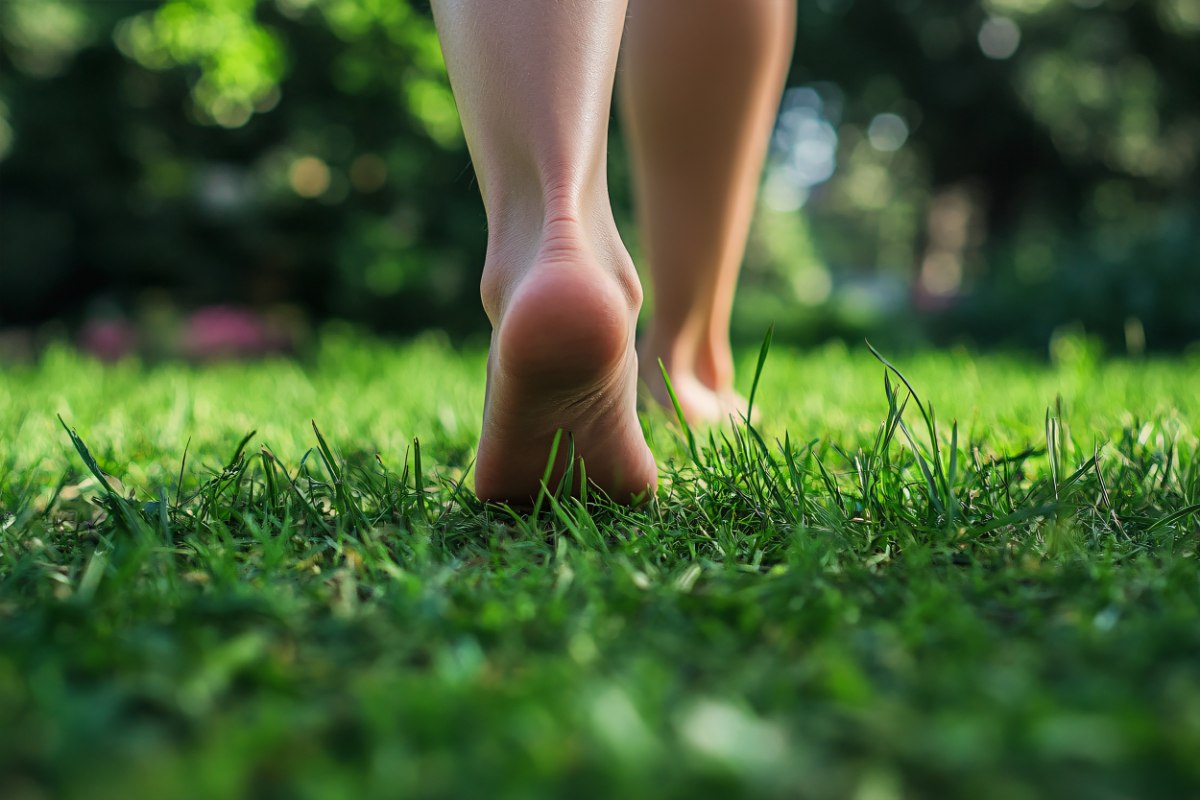
Walking barefoot on your lawn is one way to do earthing or grounding, which connects you with the Earth’s energy. The benefits of walking barefoot on grass include lowering stress and increasing energy levels.
Recently published scientific studies verify that these advantages are not just urban legends. You’ll discover why walking barefoot on your lawn should be part of your daily routine. We’ll also share expert tips on how you can maximize the effects of grounding.
- 1. Reduces Inflammation and Pain
- 2. Improves Sleep Quality
- 3. Lowers Stress Hormones
- 4. Boosts Immune System Function
- 5. Enhances Cardiovascular Health
- 6. Accelerates Wound Healing
- 7. Increases Energy Levels
- 8. Improves Balance and Posture
- 9. Strengthens Foot Muscles
- 10. Connects You with Nature
- 11. Supports Mental Health
- FAQ About the Benefits of Walking Barefoot on Grass
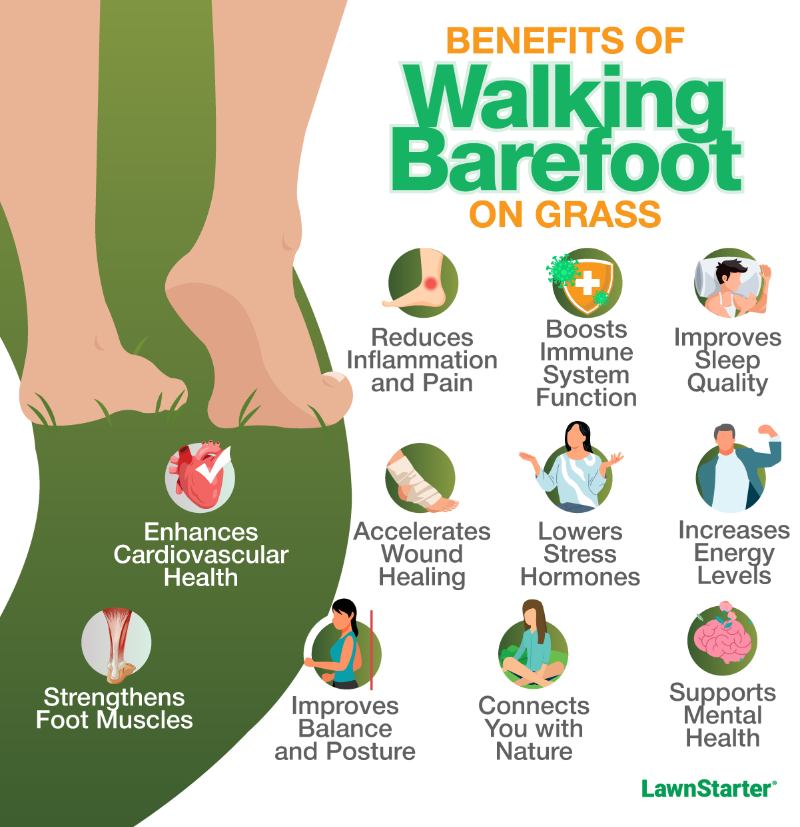
1. Reduces Inflammation and Pain
In a study published by the Journal of Inflammation Research, participants who practiced grounding experienced:
- Decreased muscle soreness and pain after exercise
- Lower levels of creatine kinase (an indicator of muscle injury)
- Less muscle damage
This is believed to be due to the transfer of electrons from the earth to the body, which may neutralize free radicals and reduce inflammation.
While more extensive research is needed, these initial findings provide a compelling case for using barefoot-friendly grass types in home lawns.
2. Improves Sleep Quality
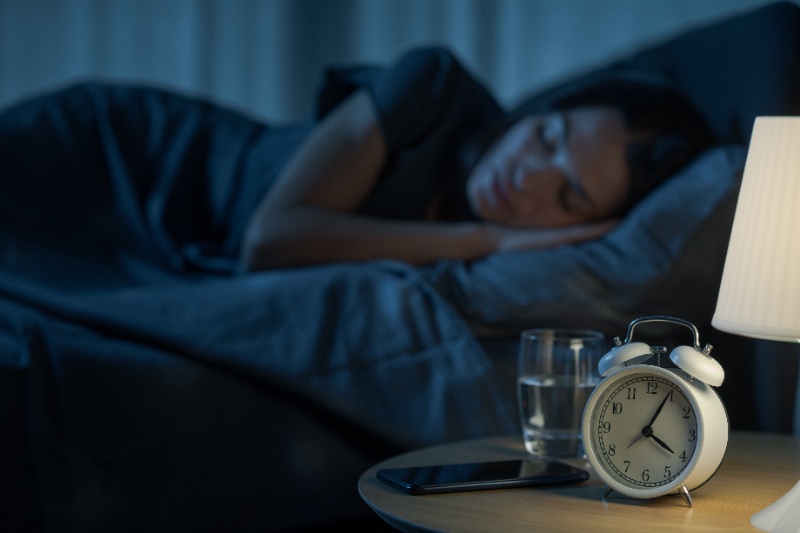
According to Hanna Medrano, a clinical psychologist, grounding can improve sleep quality because “it helps reduce anxiety, which is one of the main causes of sleep deprivation.”
So, if you make it a habit to walk barefoot on grass every day, especially in the morning, it can be a natural way to enhance sleep quality without the need for medication. Once you sleep, you can experience better sleep patterns and reduced nighttime cortisol levels.
| Don’t walk barefoot on an unkempt lawn — hire a LawnStarter lawn care pro to mow it. Our customers pay our pros an average of $51 to mow a 1/4 acre lawn and give them an average rating of 4.5. |
3. Lowers Stress Hormones
A study published by Psychological Reports found that grounding can improve mood and reduce stress. Participants reported feeling more relaxed and less anxious after grounding sessions. This study suggests that grounding reduces cortisol, the body’s primary stress hormone, leading to a calmer state of mind.
If you regularly walk barefoot on grass, you may experience noticeable improvements in your:
- Overall stress levels
- Emotional well-being
Not only does this simple practice feel good, but it can also be a natural way to manage daily stress. “When you intentionally decide to walk barefoot, you’re actually practicing mindfulness, where you focus on the present moment without judgment, and this relaxes the mind,” says Medrano.
4. Boosts Immune System Function
Earthing can also influence various physiological processes, including immune responses. It can help support the body’s natural defense mechanisms by reducing inflammation and stress.
When walking barefoot on grass, direct contact with the Earth’s surface changes the number of circulating neutrophils and lymphocytes (two types of white blood cells vital to the immune system), according to the Journal of Inflammation Research.
Since grounding allows electrons to transfer from the earth to the body, it may help reduce oxidative stress and neutralize free radicals. This, in turn, can lead to a stronger immune response.
5. Enhances Cardiovascular Health
Regular barefoot walking on natural surfaces like grass could be a simple lifestyle change to support heart health.
Another study published by Biomedical Journal suggests that grounding can lead to improvements in heart rate variability, lessening the risk of cardiovascular disease. Participants who practiced grounding exhibited better balance in their autonomic nervous system, which plays a vital role in cardiovascular function.
Additionally, grounding can contribute to overall heart wellness by:
- Helping regulate blood pressure
- Reducing blood viscosity
6. Accelerates Wound Healing
Direct contact with the earth may support the body’s natural repair processes and promote wound healing.
A study by The Journal of Alternative and Complementary Medicine observed that participants who did grounding had a decreased inflammatory response, which is vital to the healing process. This may indicate that grounding can help lessen redness and swelling around wounds.
While more research is needed, these findings offer promising insights into the potential of grounding as a complementary approach to wound care and healing.
7. Increases Energy Levels
Whenever I’m stressed out or feel stiff all over from working in front of my computer for hours, sitting out on the lawn for 10 to 15 minutes relaxes my eyes, mind, and body. But if I walk on the grass for the same duration, it also helps combat my fatigue and improve my overall energy.
Connecting with the Earth’s electrons can help the body achieve a more balanced state, contributing to increased energy levels. You can feel more energized after walking on natural surfaces, such as:
- Grass
- Sand
- Stone
The reduction in inflammation and stress may be the reason behind this, leading to improved bodily functions and a significant boost in energy levels.
8. Improves Balance and Posture
Walking barefoot helps activate and strengthen leg muscles, enhancing balance and posture. Without the support of shoes, the body learns (or re-learns) to stabilize itself more effectively. This can be particularly beneficial for older adults or those who want to improve their physical stability.
A study by Medicine & Science in Sports & Exercise highlighted that barefoot walking can restore natural walking patterns and improve foot mechanics. Participants who practiced barefoot walking showed better balance and posture over time.
9. Strengthens Foot Muscles
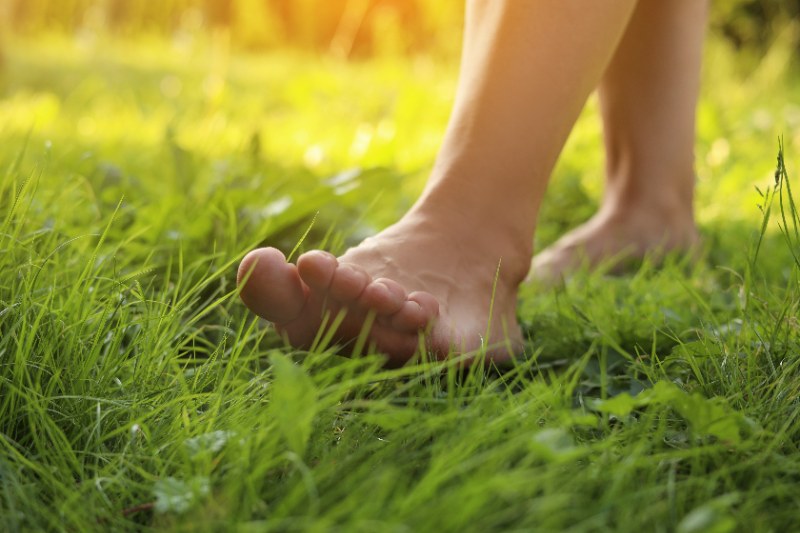
Continuing the previous benefit, regular walking without shoes can also strengthen the intrinsic muscles of the feet.
The same study by Medicine & Science in Sports & Exercise found that individuals who trained barefoot developed stronger foot muscles compared to those who wore shoes. Participants who engaged in barefoot training had improved foot muscle size and strength, which are essential for maintaining proper foot function.
So when you walk barefoot on grass on a regular basis, you can naturally strengthen your feet, leading to better support and reduced risk of foot injury.
10. Connects You with Nature
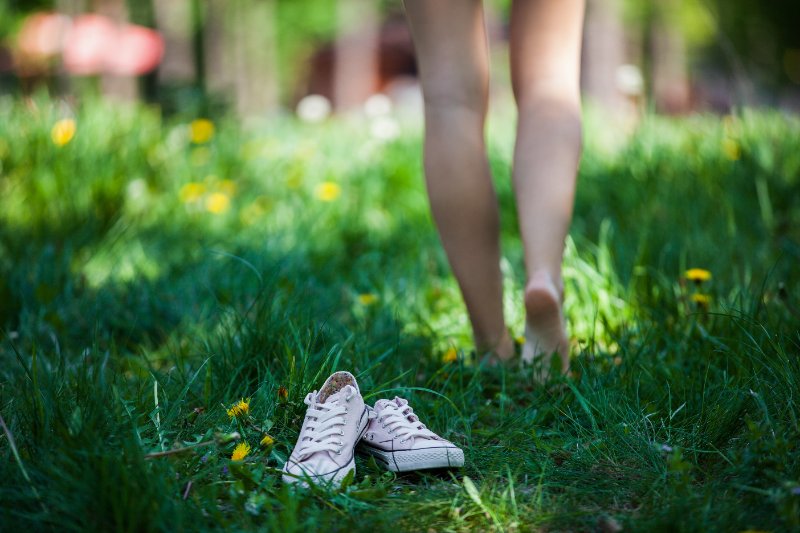
Apart from improving your physical health, walking barefoot on your lawn can also be healthy for your spiritual well-being, as it encourages a deeper connection with the natural environment.
Engaging with nature through barefoot grass walking is a sensory-rich experience. It allows you to feel the ground beneath while taking in the scent, sight, and sound of your natural surroundings.
The constant connection with nature can help:
- Promote relaxation
- Enhance awareness
- Increase mental clarity
- Serve as a form of meditation
- Lead to a healthy mind, body, and spirit
When you incorporate barefoot walking into your daily routine, even if it’s just within the confines of your property, it can be a simple yet effective way to foster a stronger bond with nature and improve overall well-being.
11. Supports Mental Health
Combining the physical sensation of cool grass beneath the feet with the visual exposure to nature creates a calming effect that can reduce anxiety and promote a mindful state.
A study by Psychological Reports found that grounding significantly improved the mood of participants, lowering their stress and increasing their feelings of calmness after the sessions.
Beyond the physiological effects, walking barefoot on grass invites intentional pauses in daily routines. But you need to have the proper mindset when doing so, according to Medrano. “Try to focus on the feeling of your feet touching the ground and start observing your surroundings, like the blades of grass, without judgment.”
FAQ About the Benefits of Walking Barefoot on Grass
Even just 10 to 20 minutes of walking barefoot on grass a day can be enough to get benefits. The key is consistency — try to make it part of your daily routine.
Early morning is the best time of day to walk barefoot on the lawn. If mornings are not practical for you, evenings can work, too. Just avoid the midday heat, as the ground may be too hot for barefoot walking.
No, you can’t get the same benefits from artificial grass. Synthetic turf doesn’t carry the same natural electrical charge as real grass, so you won’t get the grounding effects.
Yes, there’s a small risk of bacteria or parasites in grass, especially if animals frequent the area or if the lawn is not well-maintained. So, only walk on well-maintained lawn and wash your feet afterward, and be cautious if you have open cuts or a weakened immune system.
No, it’s not a replacement for cardio or strength training, but it’s a great add-on. Think of it more like a wellness boost or stress reliever. It can complement your routine rather than replace it.
Is Your Lawn Ready for Barefoot Walking?
Science is catching up with what many have intuitively felt — that walking barefoot on grass can leave you feeling calmer, healthier, and more grounded. The simple act of connecting your feet to the earth comes with a surprising number of health perks. And best of all, your own lawn can offer these benefits every single day.
But to truly enjoy these benefits, you must have a barefoot-friendly lawn and take care of it properly. That’s why it’s worth connecting with LawnStarter’s local lawn care pros who can help you keep your grass lush, healthy, and resilient for barefoot walking.
Sources:
- “Earthing: Health Implications of Reconnecting the Human Body to the Earth’s Surface Electrons.” By Gaetan Chevalier, Stephen Sinatra, James Oschman, Karol Sokal, and Pawel Sokal. Journal of Environmental and Public Health, 2012;2012:291541.
- “Grounding: Can Walking Barefoot on the Earth Heal You?” By Eleesha Lockett, MS, nutrition professional. Healthline.
- “Grounding: Techniques and Benefits.” By Kristen Fischer, senior health writer. WebMD.
- “Grounding: Walk Barefoot This Summer.” By Shari Gallup, assistant professor. Ohio State University.
- Hanna Medrano, clinical psychologist. Personal interview.
- “Long-Term Effects of Habitual Barefoot Running and Walking.” By Karsten Hollander, Christoph Heidt, Babette Van Der Zwaard, Klaus-Michael Braumann, and Astrid Zech. Medicine & Science in Sports & Exercise, 2017;49(4):752-762.
- “Pilot Study on the Effect of Grounding on Delayed-Onset Muscle Soreness.” Dick Brown, Gaetan Chevalier, and Michael Hill. The Journal of Alternative and Complementary Medicine.
- “Practical Applications of Grounding to Support Health.” Laura Koniver. Biomedical Journal, 2022;46(1):41–47.
- “The Effect of Grounding the Human Body on Mood.” Gaetan Chevalier. Psychological Reports, 2015;116(2):534-542.
- “The Effects of Grounding (Earthing) on Inflammation, the Immune Response, Wound Healing, and Prevention and Treatment of Chronic Inflammatory and Autoimmune Diseases.” By James Oschman, Gaetan Chevalier, and Richard Brown. Journal of Inflammation Research, 2015;8:83-96.
“Walking Barefoot.” By Em Onaga, molecular, cell & developmental biology student. University of California, Santa Barbara.
Main Image Credit: Firn / Adobe Stock generated with AI